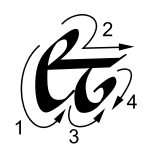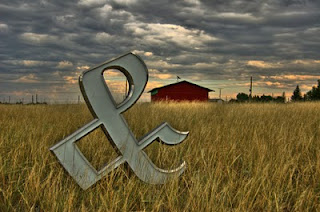What kind of a name is “ampersand,” anyway? Where did this funky symbol come from? Why does it mean, “and,” and where is it still used? All these questions and more are here for the and-swering. (pun intended)
The ampersand as a symbol comes rather directly from the Latin et, meaning “and.” In fact, the symbol as we know it is only slightly modified from the original ligature that evolved from that two-letter word. A ligature is the joining of two or more graphemes (letters) to form a single glyph (symbol). You can even almost see this joining for “&” in the modern “Et.”
The origin of the word “ampersand” is a bit more complicated. The ampersand was once popular enough to be considered a letter of the English language in its own right – it followed Z to be the 27th letter and was pronounced, “and.” When reciting the alphabet in the olden days, however, letters that could stand alone as words were preceded by the Latin phrase per se, meaning, “by itself.” This included A, I, O (in the sense of Oh), and &.
Therefore, a student reciting the alphabet would speak, “G, H, per se I, J,” until “X, Y, Z, and per se &.” (instead of the modern “X, Y, and Z”). Because the letter & was pronounced, “and,” it would be spoken, “Z, and per se and.” It is easy enough to see how and-per-se-and became corrupted over time into ampersand.
The ampersand has mostly fallen out of modern usage except in registered titles such as for Barnes & Noble or just about any law office. In these cases it is incorrect to replace “&” with “and” when referencing, as the ampersand is still considered its own word, and the titles’ words are registered.
Another surviving usage, though less common, is to type “&c” in lieu of “etc.” Because the ampersand is derived from et, it is the same as typing et cetera. Apart from this and the titling usage, the ampersand has been requisitioned by computer programmers, and lives in our language through that new and very different incarnation.
What other symbols do you use but not know the history of?
Comment and share to keep the discussion going. And subscribe via Email or by RSS if you like this blog!
Photo credits: Typographic Ligature from Wikimedia Commons

 What kind of a name is “ampersand,” anyway? Where did this funky symbol come from? Why does it mean, “and,” and where is it still used? All these questions and more are here for the and-swering. (pun intended)
What kind of a name is “ampersand,” anyway? Where did this funky symbol come from? Why does it mean, “and,” and where is it still used? All these questions and more are here for the and-swering. (pun intended)
Recent Comments